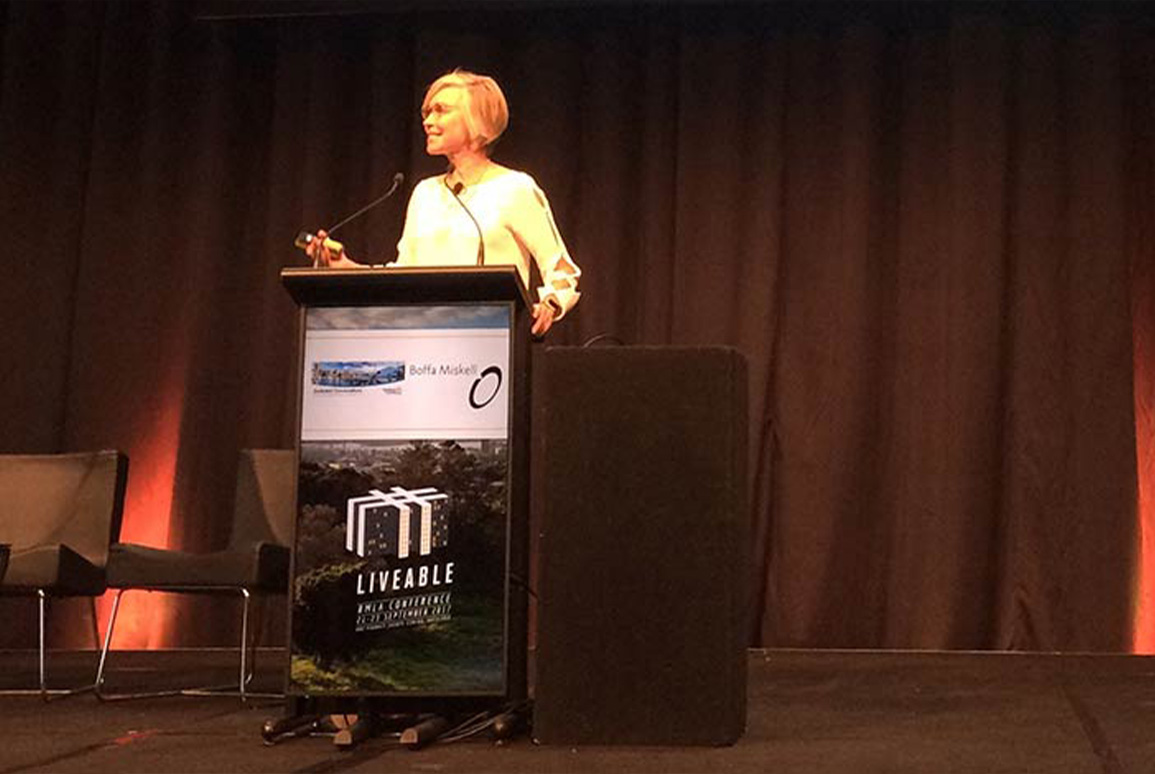RMLA 2017 keynote address
29 September 2017
Stuart Houghton, Boffa Miskell urban designer, explained, “What appealed to us about inviting Jennifer to be our keynote speaker is that she’s someone in a leadership role, working in a city that shares many of the same challenges we’re facing in our cities.”

Like Auckland, Toronto made the decision (15 years ago) to create a single “super city” out of several smaller municipalities.
After an introduction by Boffa Miskell Partner, Rachel de Lambert, Keesmaat’s speech addressed topics that Mayor Phil Goff touched on in his earlier opening remarks around growing Auckland into a “world-class city where talent wants to live”.
Keesmaat used the metaphor “gentle intensification” referring to mid-rise buildings placed along main arterial streets from the city centre to the outlying suburbs, effectively knitting those neighbourhoods together into a cohesive whole.
“It’s essential to embrace mid-level density, and to do it well,” she said. In Toronto, this meant placing mid-rise mixed-use buildings along the perimeter of city blocks, and keeping the taller forms to the interior, allowing sunshine to penetrate along the street and sidewalks, avoiding the “concrete canyons” that typify poorly managed urban growth.
Adding Light Rail Transit (LRT) and bike paths on those main arterial routes was augmented with reimagined streetscaping (trees and shrubs) and mandated green roofs on the new mid-rise buildings.
She emphasised that these medium-density residential spaces are co-dependent on a robust public transport network. You simply can’t have one without the other.
Keesmaat reported that Toronto’s significant public investment in “Urbanising the Avenues” resulted in massive private investment in those revitalised and reinvented corridors. For residents, it has meant an opportunity to live in a well-connected precinct that blends the best of suburbia – abundant green spaces, tree-lined sidewalks and a neighbourhood feel – with the urban amenities of walkability and easy access to the wider city via public transport networks.
“I think what was most applicable to the audience, particularly here in Auckland, is that Jennifer talked about actions and achievement, not just aspirations,” Stuart said. “Here in New Zealand, we have excellent vision and strategies, but we’re so bad at implementing them!”
A commitment to housing affordability by local and regional government was equally essential to successful densification and, Keesmaat said, “If we’re truly committed to being inclusive, then we must be committed to being affordable.”
Response to Jennifer’s address was immediate, as attendees shared their approval and opinions on social media.
Reflecting on the keynote address, Stuart said, “Most of the conversations on Friday were overwhelmingly positive: ‘It was a good speech, she was so inspiring’; but by Saturday, I was hearing a lot more ‘Well, she wasn’t really saying anything we don’t already know…’
“But that reaction is missing the point,” Stuart continued. “Jennifer is someone who cut to the chase with what she’s done in Toronto. She said ‘This is what we need to do, so let’s get on with it and do it.’ And I think that’s the real message.”
Stuart says that in a later conversation, Keesmaat expanded on the topic of housing affordability, noting that it’s an issue that every mid-to-large city faces.
“She brought up a good point. It really comes down to whether housing is treated as housing – a place for actual people to live and thrive; or if it’s treated simply as a commodity,” Stuart said. “If ‘people’ are taken out of the housing equation, then those houses or apartments will never be thought of as ‘homes’.
“That’s the kind of higher-level thinking we hoped Jennifer would bring, and I think she absolutely did.”

